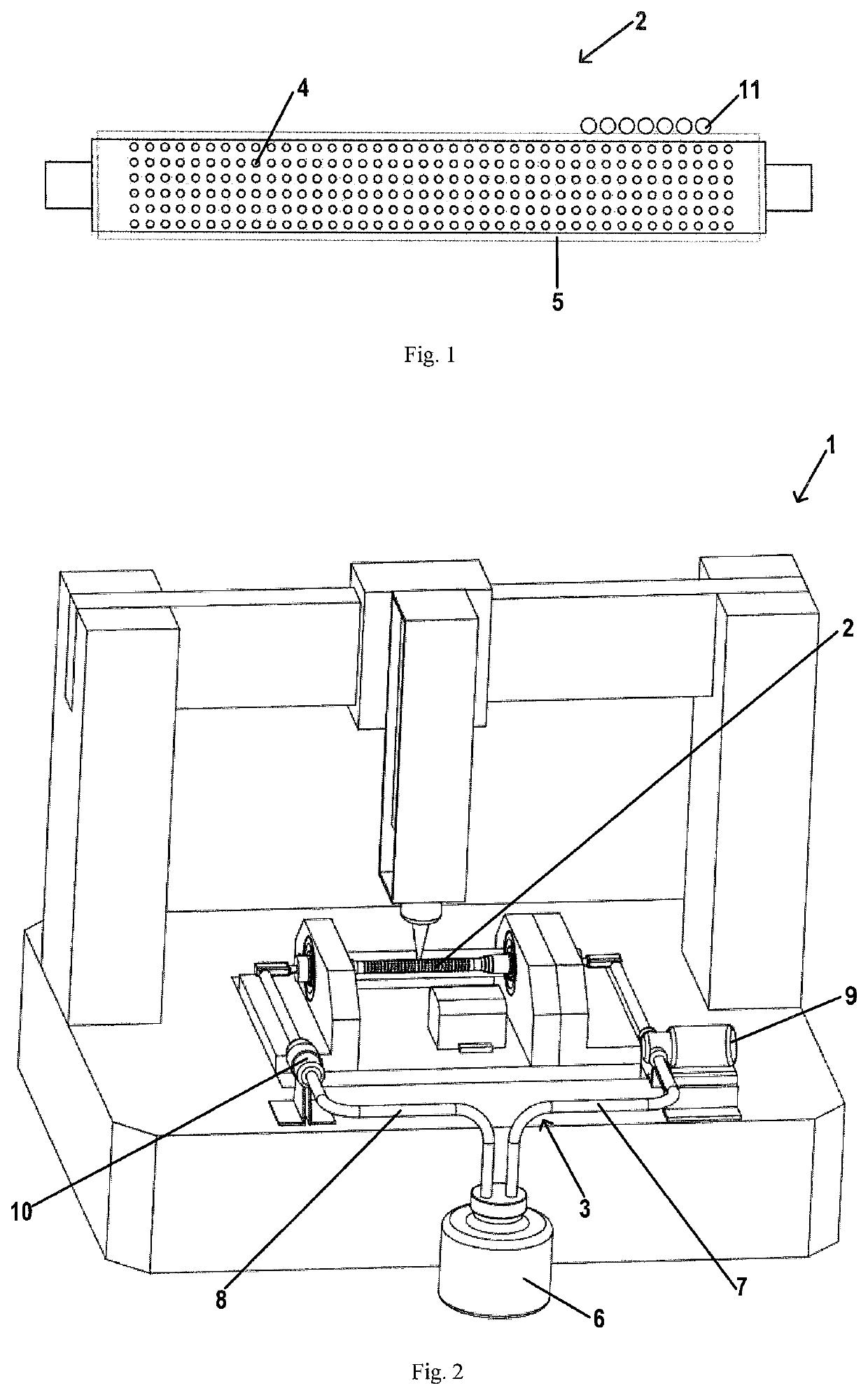Rotary device for bio-printing and method for using the same
a rotary device and bio-printing technology, applied in the field of tissue engineering and rotary rods for 3d bioprinting, can solve the problems of short service life, poor biocompatibility, and the development of a new artificial blood vessel, and achieve the effects of promoting cell growth and development, facilitating biostimulation, and maintaining bioactivity
- Summary
- Abstract
- Description
- Claims
- Application Information
AI Technical Summary
Benefits of technology
Problems solved by technology
Method used
Image
Examples
Embodiment Construction
[0033]In order to further explain the object, technical solution and advantages of the present invention, the present invention will be further described in detail in combination with the drawings as follows. It should be noted that the embodiments that are described here are only used for explaining the present invention, rather than limiting the scope of the present invention.
[0034]It is necessary to explain that, the “3D bio-printing” mentioned in the present invention may also be referred to in the art as “additive manufacturing” or “three-dimensional printing”.
[0035]With reference to FIG. 1, it illustrates a rotary rod 2 for 3D bioprinting according to an embodiment of the present invention. The rotary rod 2 is arranged horizontally and is driven to rotate. The rotary rod 2 has a hollow structure and provided with at least one hole 4 in a surface thereof, such that during a 3D bio-printing process, a nutrition solution (mainly used for supplying nutrition in a tubular tissue pr...
PUM
| Property | Measurement | Unit |
|---|---|---|
| flow velocity | aaaaa | aaaaa |
| temperature | aaaaa | aaaaa |
| biocompatible | aaaaa | aaaaa |
Abstract
Description
Claims
Application Information
 Login to View More
Login to View More - R&D
- Intellectual Property
- Life Sciences
- Materials
- Tech Scout
- Unparalleled Data Quality
- Higher Quality Content
- 60% Fewer Hallucinations
Browse by: Latest US Patents, China's latest patents, Technical Efficacy Thesaurus, Application Domain, Technology Topic, Popular Technical Reports.
© 2025 PatSnap. All rights reserved.Legal|Privacy policy|Modern Slavery Act Transparency Statement|Sitemap|About US| Contact US: help@patsnap.com

